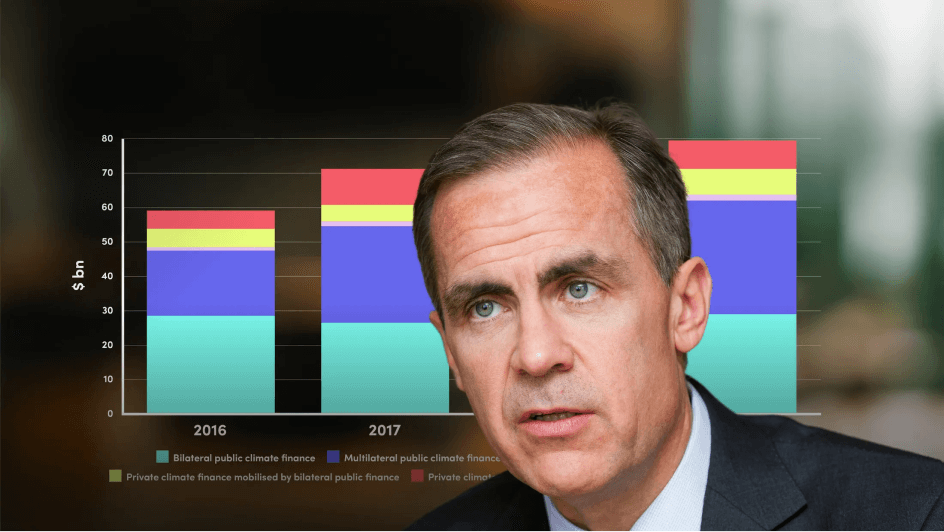
The Drivers of Widespread Renewable Energy Adoption

Colin Palmer
40 years: Renewable energy
The oil price shocks of the mid-1970s caused the developed economies to investigate renewable energy based alternatives to fossil fuels. In this video, Colin explains the factors that triggered the rise of renewable energy and enabled its growth. He further describes how the costs of renewable power have changed over time and the technologies required to enable the widespread adoption of renewable energy generation.
The oil price shocks of the mid-1970s caused the developed economies to investigate renewable energy based alternatives to fossil fuels. In this video, Colin explains the factors that triggered the rise of renewable energy and enabled its growth. He further describes how the costs of renewable power have changed over time and the technologies required to enable the widespread adoption of renewable energy generation.
Subscribe to watch
Access this and all of the content on our platform by signing up for a 7-day free trial.

The Drivers of Widespread Renewable Energy Adoption
13 mins 59 secs
Key learning objectives:
Explain what triggered the rise of renewable energy
Explain the factors that enabled its growth
Describe how the costs of renewable power have changed over time
Describe the technologies required to enable the widespread adoption of renewable energy generation
Overview:
The oil price shocks of the mid 70s caused the developed economies to investigate renewable energy based alternatives to fossil fuels. The UK focussed on wave energy, the USA, Denmark and Germany on wind energy. By the end of that 80s, wind energy was the internationally favoured technology. Driven by subsidy support, wind energy capacity grew rapidly. Solar energy was initially much more expensive than wind, but by 2010 the costs were becoming closer. By 2020, both technologies had similar costs of energy and were capable of competing, subsidy free, in the open market. Today, the great majority of all new power generation is from renewable sources.
Subscribe to watch
Access this and all of the content on our platform by signing up for a 7-day free trial.
What triggered the rise of renewable energy?
In the mid 1970s OPEC suddenly increased the price of oil. Developed economies were made painfully aware of their reliance on oil (and other fossil fuels) so embarked on programmes to develop alternative sources of energy.
What factors enabled its growth?
In the early years, government research programmes drove the development. Wave energy in the UK, while elsewhere the emphasis was on wind energy. In the early 80s, subsidy support policies were introduced. For example, tax incentives in the USA and in Denmark a price premium linked to community ownership of wind turbines. Over time these policies tended to morph into fixed price payments for renewable energy (so-called feed-in tariffs or FITs), at levels set to encourage steady deployment and investment by the private sector. Later still, competitive bidding was introduced and remains the most common system to this day. Both wind energy and solar PV have reached the level where they are now price competitive in many markets, and this advantage is spreading across the globe.
On the technology side, subsidy push did not prove to be very successful, but the market pull of price support resulted in rapid innovation, initially in wind energy and then, many years later, in solar energy. Due to its similarities with the microprocessor industry, the rate of price reduction for solar PV was the highest of all the renewable energy technologies and it is now the lowest cost source of energy in many places.
Arguably, the Danish support system was the most successful and resulted in the creation and growth of several of the world’s leading wind energy companies. The “Danish model” of wind turbine design also became the de facto standard, which continues to this day.
How have the costs changed over time?
The cost of energy from wind turbines and solar PV has reduced dramatically over the last thirty years. In the 1980s the cost of solar PV was much higher than that of wind energy, but the rate of cost reduction was much faster, with the result that the cost of power from onshore wind energy and solar PV are now similar. There is good reason to think that these price reductions will continue into the future, though at reduced rates as the technologies mature further. Other renewable energy technologies, such as wave power, tidal power and direct solar to heat have shown cost reductions, but still remain significantly more costly than wind and solar PV.
What else is needed to enable widespread adoption of renewable energy?
By their nature, renewable energies have intermittent output. The output from wind turbines changes very quickly with wind speed, and of course solar PV does not function at night. Over long periods, there can be some positive correlation between renewable generation and consumer demand - in regions with a temperate climate, demand increases in winter, a time when winds are stronger, in hot countries, solar output is correlated with power demands for air-conditioning. However, on shorter timescales, supply and demand will often not be matched, so backup power is required. This is the solution that has worked well until recently, but as the proportion of renewable energy on electricity network increases, other measures are needed.
On the demand side, consumers can be encouraged to vary their demand in response to the needs of the network, and with internet based solutions this is becoming an automated process. It is also possible to store energy at times of excess generation, and a range of storage technologies are being deployed, with others under development. There is no single best solution, with some best suited to short term operation, others for longer. The increase in adoption of electric transport is providing distributed energy storage (and potential for demand variation if consumers are incentivised to charge their vehicles at times of otherwise low demand). Taken together, all these measures are being interconnected and automated, in what is known as the “smart grid”, a software intensive system driven by IoT technologies, machine learning and AI.
Subscribe to watch
Access this and all of the content on our platform by signing up for a 7-day free trial.

Colin Palmer
There are no available Videos from "Colin Palmer"





























